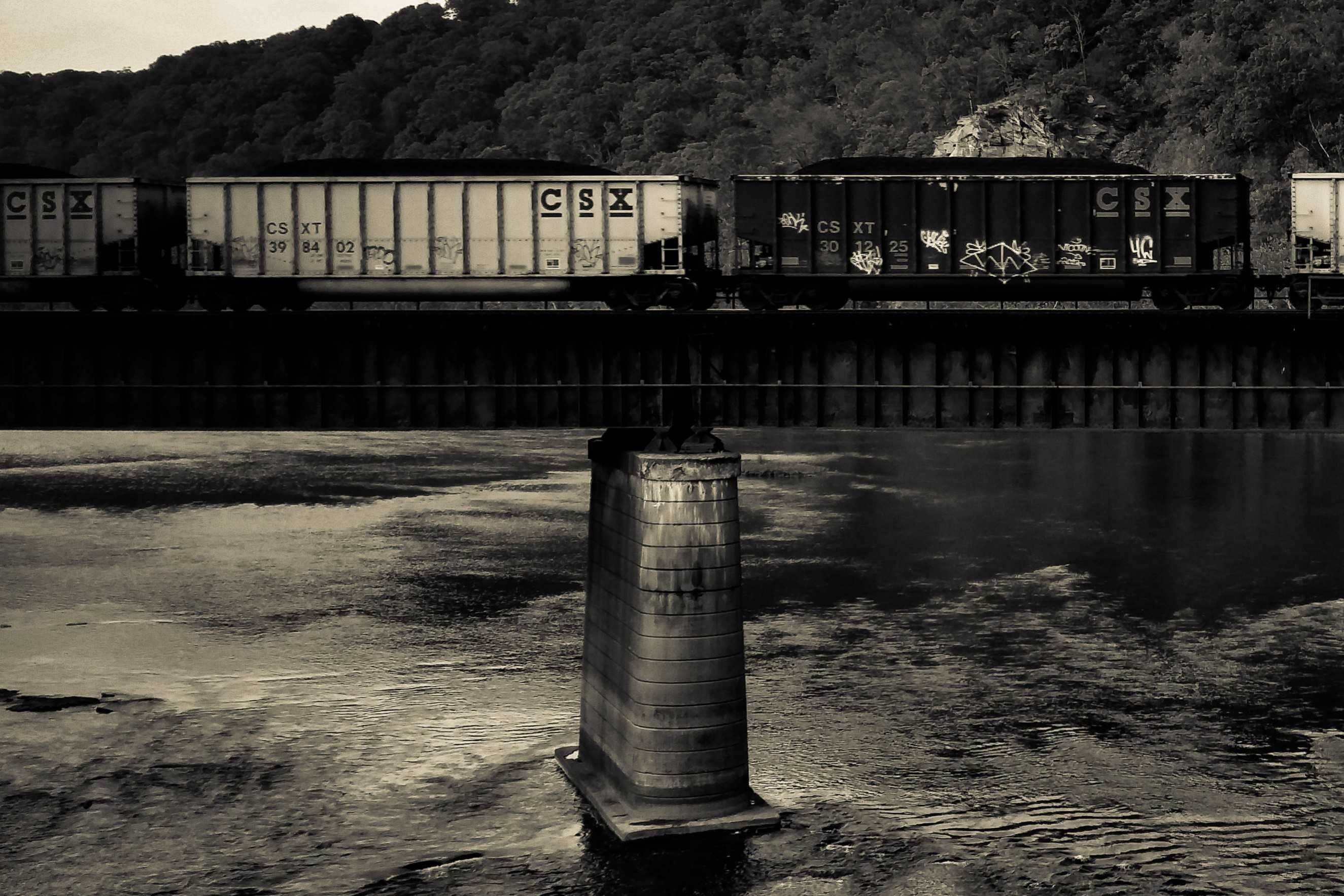Somewhere on Route 15 south of Gettysburg, Pennsylvania and just beyond Fredrick, Maryland you find a tiny town that time has forgotten. And though time may have forgotten it, it’s residents certainly haven’t.
Situated at the confluence of the Potomac and Shenandoah rivers and where Maryland, West Virginia and Virginia all come together is the historic town of Harper’s Ferry. The town is best known for the 1859 raid on the Armory by abolitionist John Brown during the American Civil War. Though peaceful today, it was not always this way. During the Civil war the town changed hands eight times! The town was in a an extremely strategic position with the two rivers coming together and the presence of the B&O railroad.
From Wikipedia:
At the beginning of the 20th century, Harper’s Ferry was a fashionable resort for vacationers traveling by train from Washington, D.C., and Baltimore. An elongated mass of land in the Potomac, known as Island Park, was a site for entertainment, a kind of Coney Island. It was owned by the Baltimore and Ohio Railroad (B&O Railroad), which on weekends and holidays ran as many as 28 excursion trains a day to bring picnickers, bowling clubs, singing societies and honeymooners up from the city. According to Mayor Gilbert Perry, (mayor in 1957), recalling the period:
“Society people came from the city for the whole summer, or for a week or two during the racing season over at Charles Town…At Hilltop House (hotel) guests included bank presidents, businessmen, and real high society. Woodrow Wilson stayed there..The hotel servants wore starched white jackets. And there was a croquet court, where a Gibson Girl might be seen playing against a gentleman with a wonderful mustache…It was quite the thing to elope by the old Chesapeake and Ohio canal boat, be married at the Ferry by the tolltaker, who was a retired parson, and honeymoon at Hilltop House.”
But its popularity faded. The Great Depression and devastating floods washed away the resort trade. Highway bridges, rebuilt a mile below town on the Potomac and a mile above on the Shenandoah, routed traffic around the town and the population declined.
In 1944 most of the town became a park, Harper’s Ferry National Historical Park, administered by the National Park Service. The majority of the existing homes in Harper’s Ferry (including Charmadoah) are historic, and some of these are registered in the National Register of Historic Places. In 1950 Harper’s Ferry had a population of 822.
As of 2010 the population was down to 286!
When you first arrive at the park you are directed to a parking lot that surrounds a small bus stop. From there you catch a free shuttle bus don to the town. Upon departing the bus stop in town we head for the trail which not surprisingly takes us across the first of many rail beds.
Across those tracks and and 500 yards or so into the trail we reach the banks of the mighty Shenandoah river. The day is warm and the sun is burning through on this amazing autumn day.
The Shenandoah runs swift here. There is a reason why the mills came here, and it was to harness the power of the river.
Others come here to the river as well.
The mill ruins are massive and plentiful here. They would divert and channel the river through tunnels under the mill to turn heavy grinding stones in the upper floors. Not much remains other than the foundations of these giant buildings.
Up the river a way we come across the empty piers of the Bollman truss bridge, constructed in 1868.
The Bollman went into operation in 1870 but rail traffic was shifted to a new replacement bridge in 1894. The old rail bridge was paved as a highway until it was swept away in the famous 1936 flood.
A sharp left turn from this location gives a wonderful view of the wooden Winchester branch trestle bridge with the 1833 built St. Peter’s Roman Catholic Church steeple rising through the trees in the background.
Here is a closer look at the beautiful steeple.
Another more unusual view of the wooden trestle.
From that point we decide to hike back towards the old C&O Canal towpath and bridge for a couple photos.
I have visited Harper’s Ferry before and missed this unique footbridge and was happy to be able to photograph it on this quiet day. Something else I missed was back in the middle of town and that was old fire engine house otherwise known as John Brown’s Fort.
From Wikipedia:
Beginning their raid the night of October 16, Brown and his small army of 21 men (16 white and 5 black) did initially manage to capture the armory and arsenal and succeeded in taking 60 citizens of Harper’s Ferry hostage. However, Brown’s plan relied on local slaves joining the insurrection, and none did. The local militia and armed townspeople killed several members of the insurrection and forced Brown to take up position in the fire engine house where Brown’s men had placed several of the hostages and prepared a defensive fortification. On the night of October 17, U.S. marines and then Brevet Colonel Robert E. Lee and his aide J.E.B. Stuart arrived in Harper’s Ferry to put down Brown’s insurrection. The next morning, using a ladder as a battering ram, the marines battered down the door and stormed the fire engine house. One marine was mortally wounded in the attack as well as several of Brown’s men. Some of Brown’s men managed to escape, but most were captured, including Brown who was stabbed by the Marine commander, Lt. Green. The hostages were freed.
Due to the re-enactment going on over the weekend there were all sorts of goodies around town. Including this old U.S.Mail Wagon.
We were travelling from Frostburg, MD to Luray, Virginia this day so Harper’s Ferry was a late day stop-over. Due to this, we had missed most of the festivities of the weekend. I was fortunate to capture these folks though. The were nice enough to pose for this shot. Unfortunately I did not get their names.
Just over from John Brown’s Fort is a foot path and walk attached to the 1894 Railroad bridge crossing the Potomac to the Maryland side and old Lock 33 of the C&O Canal. Just on the other side of the road is the old abandoned Lockhouse. I call this shot “You’ve Got To Have Faith” as the lockhouse was perched precariously at the foot of the towering black stone cliffs of Maryland Heights.
It is also worth noting that another famous trail is here, the Appalachian trail. The spot directly under the twin rail bridges and the tunnel here is the “Psychological” halfway point of the Appalachian trail.
With the last bus out just 30 minutes away and a 7am next morning start looming it’s time to head back. Well, maybe just a couple more shots along the way.
This last building is just across from our bus stop. An interesting note on the front door says “Private Residence”. The owner must have a helicopter as I saw no place to park a car, or horse for that matter.
All in all I wish I had more time to explore this little slice of history. There are plenty more ruins and cool things to discover her like St. Johns Church, Hilltop Hotel, and the Harper’s Ferry Power plant. Even though I never did find Mr. Harper’s Ferry, there will definitely be another visit to this awesome place in the near future.
~AD

























